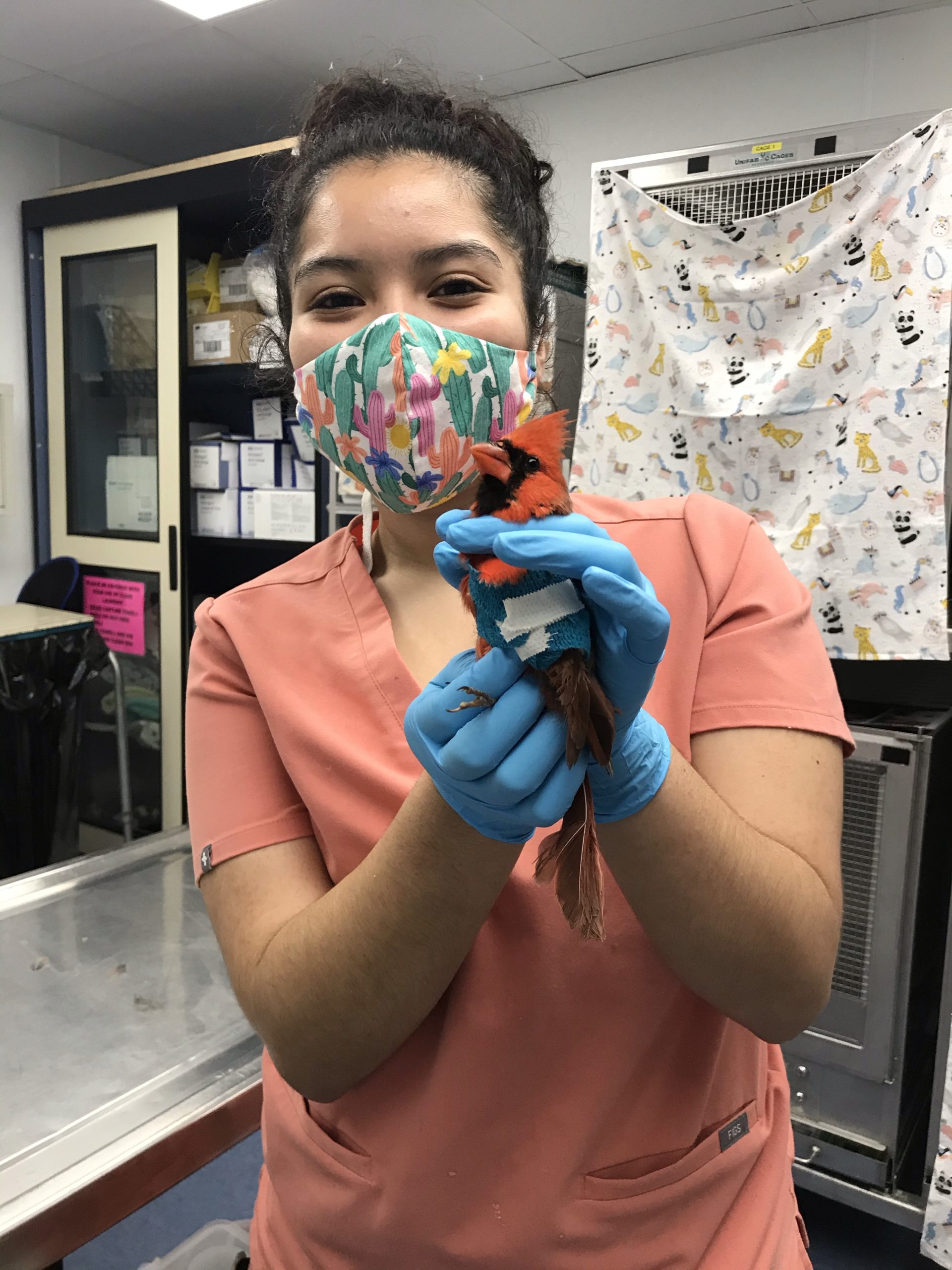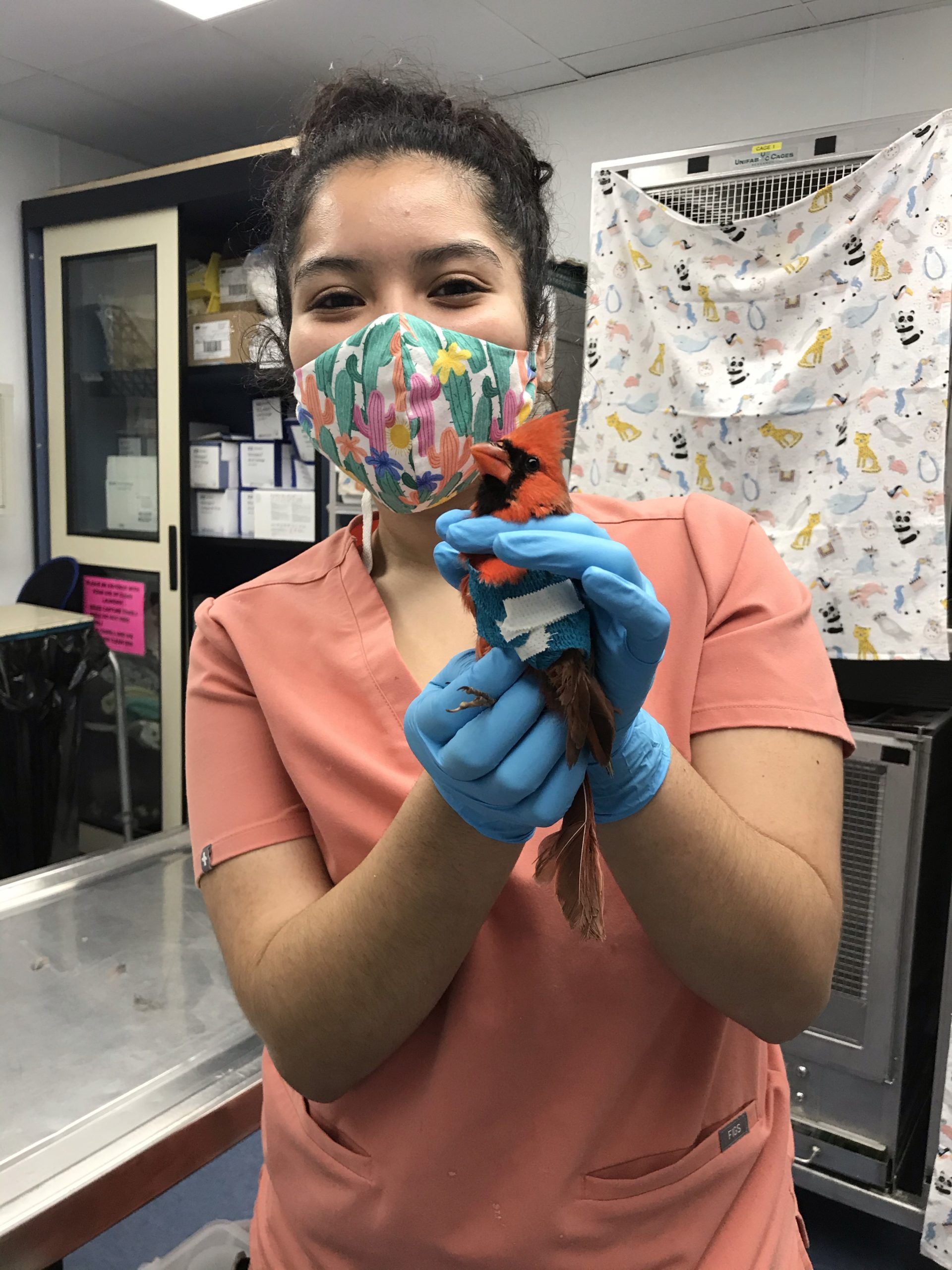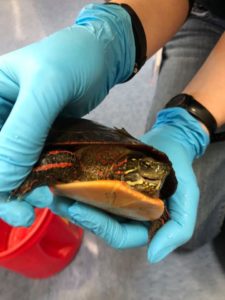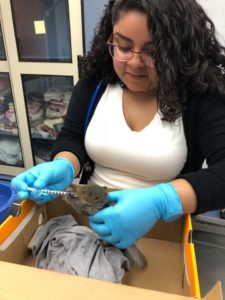With so many patients of every stage of life and health, the WMC has to take extra measures to keep disease from spreading between patients or even to volunteers. This concept of preventing the introduction and spread of pathogens and diseases is called biosecurity. Biosecurity is important in hospitals and can also apply in other contexts, like farms or dog kennels. Our procedures help keep communicable pathogens controlled and allow our patients to return to full health in a safe environment.
Though there are many complicated ways to ensure a biosecure area, they all come down to keeping a clean environment. We regularly disinfect all equipment we use while examining patients, such as stethoscopes or scales. We also utilize special cleaning products for our exam tables to eliminate a wide range of pathogens. First, we remove all large particles, such as dandruff or hair, then we select an appropriate product, such as bleach, chlorhexidine, or an accelerated hydrogen peroxide cleanser. Canine distemper virus is an example of a pathogen that is very stable in its environment and requires special cleaning solutions. When we have chosen a cleaning product that is appropriate for the pathogen we’re concerned about, we also have to ensure an adequate contact time. Contact time refers to the amount of time the product must be on the same surface as the pathogen in order to be sure the pathogen will be eliminated. In many cases, this means allowing the disinfectant to rest on the surface for 3-5 minutes before wiping it dry. Patients’ enclosures must be cleaned regularly to help prevent growth of new pathogens or re-infection with pathogens they are fighting off. We take care to avoid exposing patients to harsh cleaning products, so when necessary we carefully rinse toys and other objects with soapy water.
While we can clean and disinfect surfaces, we must take additional measures to protect ourselves. To prevent spreading disease with our hands, we utilize nitrile examination gloves whenever handling a patient or cleaning their enclosure. This keeps pathogens from the patient from harming us and prevents us from exposing the patient to new pathogens. Gloves are changed between patient exams and we never touch doorknobs or light switches while wearing gloves.
 In situations where animals have diseases that spread easily, we separate them in an isolation room. This increases physical distance between patients. We take special precautions when working with patients in isolation. Items such as stethoscopes or towels that we bring into the room are not taken out without immediate disinfection. We have a “foot bath” containing an appropriate cleaning product that volunteers must step into to sanitize their shoes.
In situations where animals have diseases that spread easily, we separate them in an isolation room. This increases physical distance between patients. We take special precautions when working with patients in isolation. Items such as stethoscopes or towels that we bring into the room are not taken out without immediate disinfection. We have a “foot bath” containing an appropriate cleaning product that volunteers must step into to sanitize their shoes.
The measures we take to keep our patients safe were developed specifically for the pathogens we are treating. Maintaining cleanliness is a simple but important way to prevent spread of disease among patients. As science teaches us more about emerging wildlife diseases, we’re prepared to adapt our biosecurity protocols and make improvements when necessary, all in the name of safety for our patients, volunteers, and the Clinic as a whole!




